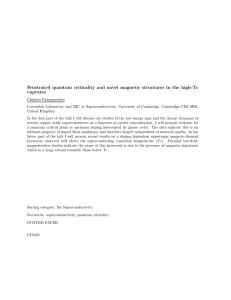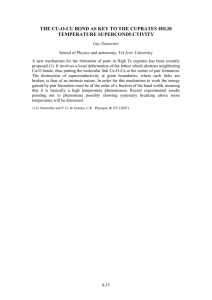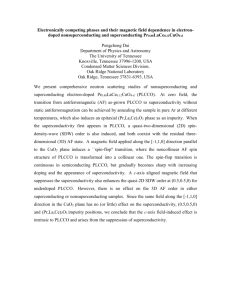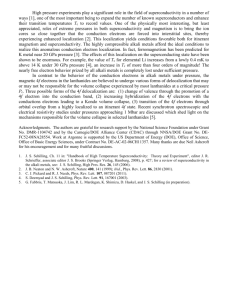Boston College Physicists Find New Explanation for
advertisement
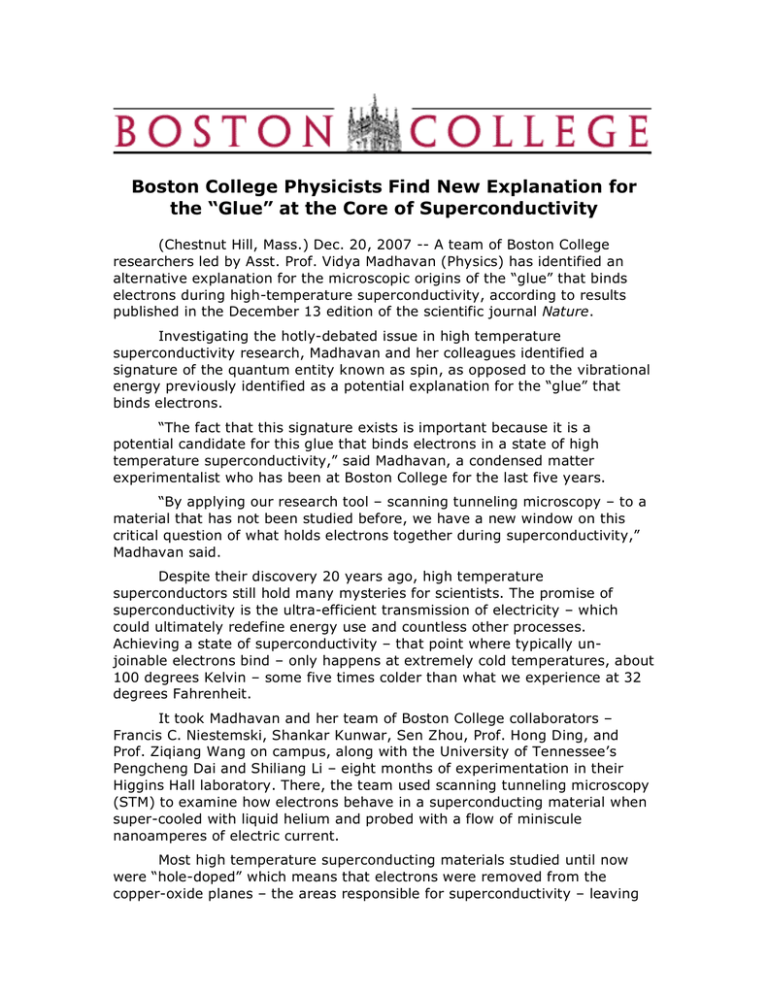
Boston College Physicists Find New Explanation for the “Glue” at the Core of Superconductivity (Chestnut Hill, Mass.) Dec. 20, 2007 -- A team of Boston College researchers led by Asst. Prof. Vidya Madhavan (Physics) has identified an alternative explanation for the microscopic origins of the “glue” that binds electrons during high-temperature superconductivity, according to results published in the December 13 edition of the scientific journal Nature. Investigating the hotly-debated issue in high temperature superconductivity research, Madhavan and her colleagues identified a signature of the quantum entity known as spin, as opposed to the vibrational energy previously identified as a potential explanation for the “glue” that binds electrons. “The fact that this signature exists is important because it is a potential candidate for this glue that binds electrons in a state of high temperature superconductivity,” said Madhavan, a condensed matter experimentalist who has been at Boston College for the last five years. “By applying our research tool – scanning tunneling microscopy – to a material that has not been studied before, we have a new window on this critical question of what holds electrons together during superconductivity,” Madhavan said. Despite their discovery 20 years ago, high temperature superconductors still hold many mysteries for scientists. The promise of superconductivity is the ultra-efficient transmission of electricity – which could ultimately redefine energy use and countless other processes. Achieving a state of superconductivity – that point where typically unjoinable electrons bind – only happens at extremely cold temperatures, about 100 degrees Kelvin – some five times colder than what we experience at 32 degrees Fahrenheit. It took Madhavan and her team of Boston College collaborators – Francis C. Niestemski, Shankar Kunwar, Sen Zhou, Prof. Hong Ding, and Prof. Ziqiang Wang on campus, along with the University of Tennessee’s Pengcheng Dai and Shiliang Li – eight months of experimentation in their Higgins Hall laboratory. There, the team used scanning tunneling microscopy (STM) to examine how electrons behave in a superconducting material when super-cooled with liquid helium and probed with a flow of miniscule nanoamperes of electric current. Most high temperature superconducting materials studied until now were “hole-doped” which means that electrons were removed from the copper-oxide planes – the areas responsible for superconductivity – leaving behind holes which then proceed to superconduct. But there is another family of materials known as electron-doped superconductors, where electrons are added to the copper oxide planes. Scientists suspect that electron-doped materials should be similar to hole-doped materials since superconductivity occurs in the same copper-oxide planes in both materials. But there have been very few studies of these electron-doped materials. Using hole-doped materials, researchers have found signs that lattice vibrations, or phonons, were involved in superconductivity and may even be the unknown “glue” that pairs up the electrons. Madhavan’s team made the first foray into studying an electron-doped material (known as PLCCO) using a STM, which relies on a purely quantum mechanical phenomenon called “tunneling.” STM allowed the researchers to make images and study the electronic properties of materials at the scale of single atoms. The STM measurements revealed a signature of excitations that might originate from spins rather than lattice vibrations, confirming for the first time theories that spin excitations should be considered as the “glue” so critical to high temperature superconductivity. Madhavan likens the team’s discovery to finding just one small part of a large jigsaw puzzle. But in the arena of superconductivity research, small discoveries are important as they move the field forward incrementally toward the discovery of a guiding microscopic theory that can explain superconductivity or the elusive glue at its core. That there might not just be a single explanation for electron coupling means scientists will need to reevaluate possible explanations of the nature of superconductivity as they endeavor to unlock the physical mysteries behind a promising, yet elusive phenomenon. “To see the work of Boston College Physics Department faculty and researchers published in the journal Nature is recognition of the outstanding, high-quality work being done by Professors Madhavan, Ding and Wang,” said Prof. Michael Naughton, chairman of the Physics Department. “This is the latest advance to emerge from the natural sciences at Boston College and reflects the results of our strategic investment in facilities and faculty in these areas.”
